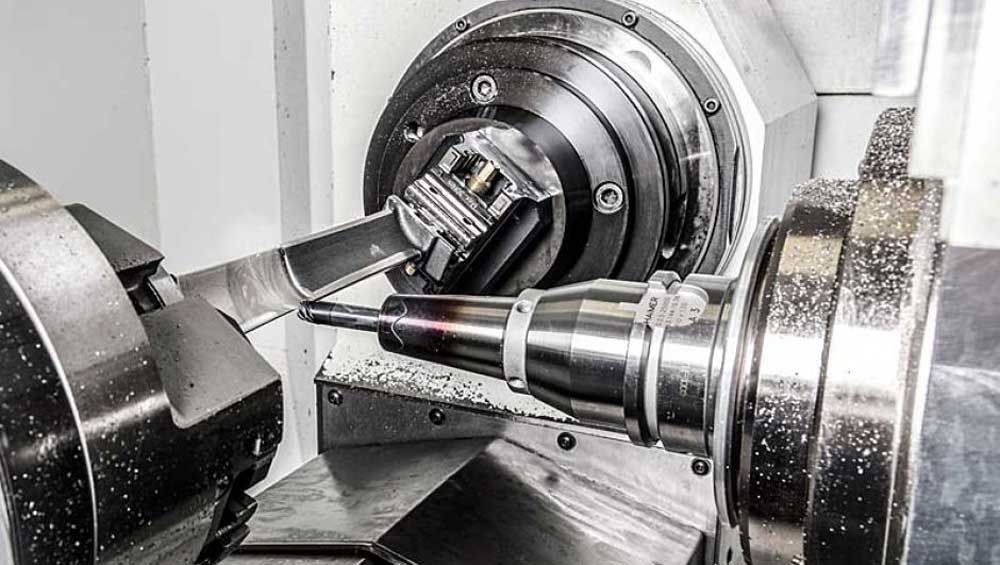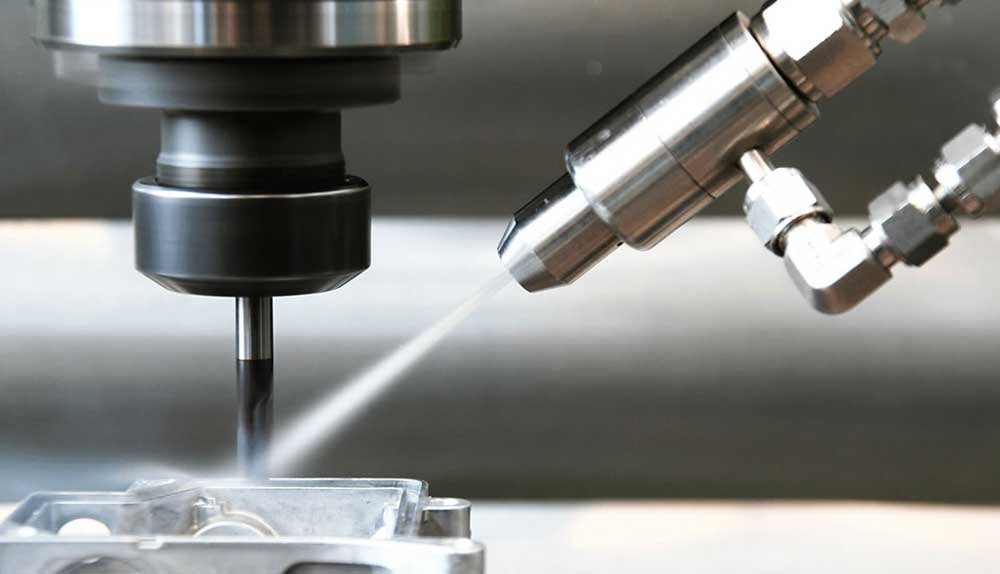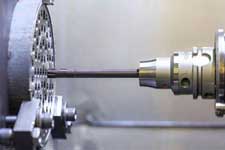Cryogenic cooling reduces wear and tear and tool life
- Details
- Hits: 12857
Above all, the boom in large aircraft is turning them upside down Material world um: All of a sudden, titanium, nickel-based alloys, high-strength steels and carbon fiber plastics (CFRP) have to be machined on a large scale and with high productivity. Conventional cooling lubricant concepts in production often reach their physical limits here. A new cooling concept is the cryogenic cooling, at the ISF TU Dortmund is being researched.

Cryogenic cooling is nothing really new in and of itself, as it existed in the US as early as the 1950s first cooling attempts with CO2. In the late 1990s there was a major research project at Columbia University with twelve industrial companies on nitrogen cooling. The Institute for Machining Production (ISF) initially started with high-alloy steels in 2003 and in recent years has dealt intensively with cryogenic cooling when machining special materials such as titanium and nickel-based alloys.
Cryogenic cooling when machining titanium alloys
Cryogenic cooling is particularly beneficial for the titanium alloysthat we are very limited in terms of cutting material. It can be found here with the Tools Only use hard metals because cutting edges made of ceramic and CBN wear out after a short time. In order to increase productivity when machining titanium with hard metal tools, an adapted cooling process is required. Here, for example, high-pressure cooling lubrication has proven itself.
With the new cooling process, the Tool life or increase the cutting speed and thus the productivity of the machining. That is certainly a very motivating factor, for example in the rapidly growing aviation industry, which is increasingly having to use titanium due to the growing CFRP share.
Investigations of different cooling concepts
The ISF conducted experiments with the flooding, high pressure, CO2-Schneestrahlkühlung and combinations of cryogenic technology and minimal quantity lubrication by. For Inconel 718, a nickel-based alloy for the high-temperature range, it was found that with pure CO2-Cooling the lack of lubrication leads to heavy wear. A combination with minimum quantity lubrication (MQL) - a quasi-dry machining - reduces the flank and notch wear.
 Ergonomic computer workstation in the office and home office
Ergonomic computer workstation in the office and home office
However, success stands and falls with the Type of feed, the pressure of the minimum quantity supply and the correct selection of the cold-resistant MQL oil. There is still a need for action in the design. In cryogenic cooling, we only focus on CO2, it depends on the type of tool cooling.
The internal tool cooling, which is technically very complex due to the introduction of coolant holes, can only be realized with nitrogen, since nitrogen is present at a temperature of almost -200 degrees Celsius during the entire feed. If the cooling medium is supplied externally via nozzles, both nitrogen and CO2 suitable. The exiting CO2 Although with minus 82 degrees Celsius has a lower temperature than nitrogen, the specific heat capacity is higher, as the CO2 is present in liquid form until the nozzle outlet.
New trend in cooling technology

By the way, cryogenic cooling is a real trend and not hype: On the one hand, the aviation industry has a clear need for more efficient processes and, on the other hand, from a research perspective, we have demonstrated the essential advantages of cryogenic technology as a way of increasing productivity. The interest is there: This is proven by Premium Aerotec GmbH, a leading supplier in the industry that has already bought machines with cryogenic cooling and is testing the technology.
The economics of cryogenic cooling depends on that CO2-Consumption from. In order to reduce the costs of carbon dioxide consumption, we have already carried out studies to reduce consumption. We have shown that with a significantly reduced CO2 Mass flow can be machined precisely from 2,7 to 0,6 kilograms per minute with just as good results. With further optimization and reduction of the CO2Consumption is to be expected in significant increase in productivity, that pays off the cryogenic cooling.
Adaptation to tool and machine
For the cryogenic Snow jet cooling we need modified tools. The tools for high pressure cooling can be used whose nozzles are connected to the CO2-Snow jet can be adjusted in terms of distance, shape, diameter and possibly the position. In machine tools, a gas-tight and pressure-tight supply of CO2-Snow jet through the turret and when milling through the spindle.
 Optimized cooling when rubbing based on additive manufacturing
Optimized cooling when rubbing based on additive manufacturing
However, in contrast to nitrogen cooling with its extremely low temperatures of around minus 200 degrees Celsius Don't worry about thermal compensation when designing the machines. At the CO2Cooling it is all in all quite simple: A tank in the machine and pressure resistant lines are required. This type of cryogenic cooling can therefore also be relatively easily retrofitted: It therefore also lends itself to mechanical engineers who want to gain experience with it. With nitrogen, the entire design is more complicated.
Incidentally, we have shown in tests that wear can be significantly reduced with titanium alloys compared to high-pressure cooling. In addition, the effective cooling the point of action and the displacement of oxygen to a reduced influence on the edge zones.

Hendrik Abrahams is a scientist at the Institute for Machining (ISF) at the Technical University of Dortmund.
